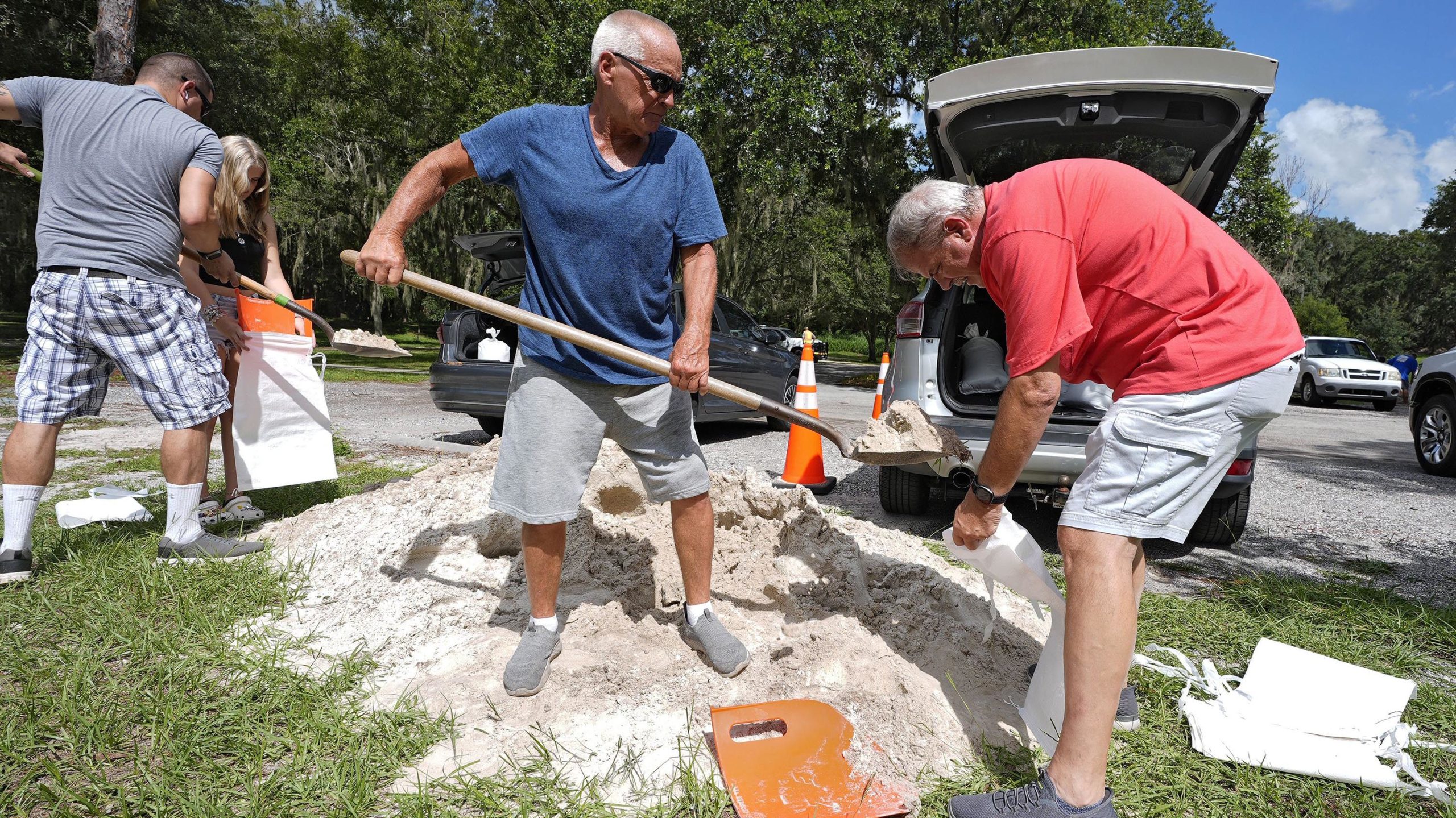
As Tropical Storm Debby moves through the Gulf of Mexico, forecasters are focusing on two potential effects of the storm’s slow speed: More time will allow the system to gain strength to become a hurricane and if it lingers, the Southeast could see huge amounts of flooding rainfall over the next few days.
Authorities in Florida and Georgia are urging residents to prepare as the storm makes its way through the near-record warm waters of the Gulf of Mexico.
Debby is expected to continue strengthening on Sunday after being upgraded to a tropical storm on Saturday evening, according to the National Hurricane Centre.
READ MORE: Aussie’s classy moment despite own Olympic heartbreak
Debby has sustained winds of 72 km/h and is located about 400km south of Tampa, Florida, according to the National Hurricane Centre’s 11pm ET Saturday update (Sunday morning AEST) on the storm.
Hurricane conditions are expected to arrive by late Sunday night or Monday morning, with the outer bands of the storm system making their way on shore during the day on Sunday.
The strengthening storm tracking up the Florida Peninsula’s western coast prompted county and state officials to issue a string of voluntary and mandatory evacuation orders on Saturday, as the hurricane centre posted hurricane watches and warnings across several parts of the state, including near Tampa and the Big Bend region.
Florida Gov. Ron DeSantis and Georgia Gov. Brian Kemp declared states of emergency for their states Saturday in advance of the storm’s arrival.
“As the state prepares for a major storm system early this coming week, we urge all Georgians to take precautions to keep their families and property safe,” Kemp said in a message on X.
Storm expected to intensify over Gulf
The slower Debby moves and the longer it sits over warm waters, the more likely the storm is to intensify, leading forecasters to predict the storm could peak at a Category 1 hurricane strength just before landfall.
“Conditions are favourable for strengthening over the Gulf of Mexico with warm sea surface temperatures and light shear. Intensification is likely to be slow during the first 12–24 hours, then proceed at a faster rate after the cyclone develops an organided inner core,” the National Hurricane Centre said.
By early on Monday, Debby is expected to move into the Apalachee Bay area of Florida as it moves northward over the Gulf, according to the Weather Prediction Centre.
The Apalachee Bay area, which includes parts of Taylor, Jefferson, Wakulla, and Franklin counties, can expect to get drenched with heavy rain from Debby on Sunday, increasing the possibility of flash flooding in several spots, the hurricane centre said.
READ MORE: Probe launched after 36-year Aussie rowing low
Heavy rain could linger for days
As a slow-moving Debby churns along the Georgia-Carolina coastline heading into the new week, it could lead to seemingly endless amounts of rain for days, with totals potentially reaching up to 30cm.
The heaviest rain totals could even top 45cm or more depending on how long Debby meanders, with some forecast models showing Debby could linger through at least Thursday.
READ MORE: Second death confirmed amid Melbourne Legionnaires’ outbreak
“This rainfall will likely result in areas of considerable flash and urban flooding, with significant river flooding expected,” the National Hurricane Centre said.
A warmer atmosphere holds more moisture and can dump heavier rain.
Warmer oceans can fuel stronger hurricanes, packing a punch with higher storm surge thanks to sea-level rise.
Destruction from water – both storm surge and flash flooding from heavy rain – claim the most lives in tropical systems.
With an uptick in the intensity forecast comes an increase in the storm surge forecast. Storm surge is the ocean water pushing inland on the onshore winds of the hurricane. Storm surge flooding above ground could rise to 1.8m to 3m along Florida’s Big Bend.
READ MORE: Dozens arrested in violent UK protests over Southport stabbings
Tampa Bay is expecting 60cm to 1.20m of storm surge.
Warmer air and ocean temperatures fuelled by human-induced climate change can lead to wetter tropical systems.
The North Florida region nestled between the Panhandle and the rest of the state’s peninsula took a devastating hit last August from Category 3 Hurricane Idalia, and now faces a new threat from Debby.
links to content on ABC
9News





